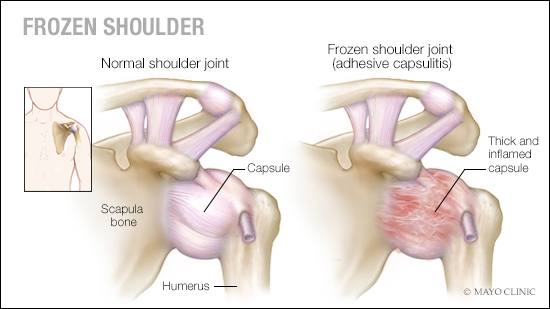Cooler temperatures during fall months remind us that winter is coming. While we don’t have to deal with freezing conditions here in Arizona, there are some “frozen” things we can experience. Some of these things are enjoyable-the beloved Disney film, yogurt, pizza, bananas- and some are not- a frozen bank account, for example, and a condition known as “Frozen Shoulder.”
The official name for frozen shoulder is Adhesive Capsulitis. The main symptom of this condition is a stiff shoulder joint, which affects range of motion. Not only is this very inconvenient, it’s also painful. Frozen shoulder is most common in women, aged 35-60, but men are not immune to it. Diabetes, thyroid conditions, and trauma can make someone more prone to developing this condition. If left alone, the pain and lack of mobility will eventually resolve themselves, but it can take years.
There are three stages of frozen shoulder. First, we have the freezing stage. In this stage, pain increases as range of motion begins to decrease. This stage can last up to several weeks. Next, we have the frozen stage where pain continues, especially with movement. Adhesions start to form, making the tissues stick together, further limiting the motion. Separate problems
develop, especially muscle imbalances. Finally, we have the thawing stage. Stiffness and pain continue, but you will see gradual improvement. This final stage can last anywhere from several weeks to over a year.

Physical therapy applied at each stage can significantly reduce healing time. One of
the most important things is a proper stretching routine, both in office and at home. Manual therapy will also be part of your recovery. It’s important to discuss your recovery process with a physical therapist. Doing so will reduce the risk of worsening your injury in any way. If you think you may have frozen shoulder, make an appointment to be evaluated. We would love to help you heal.

Post written by: Rod Walker, DPT
